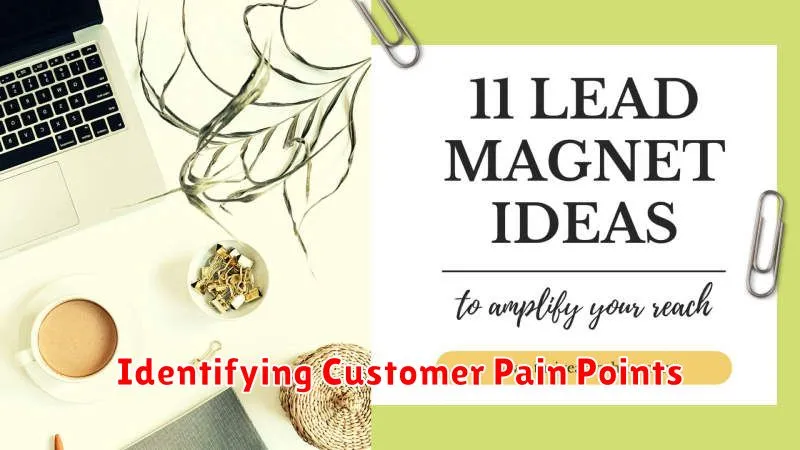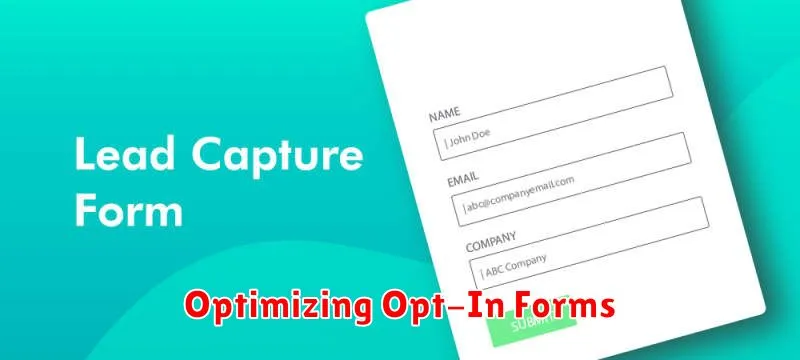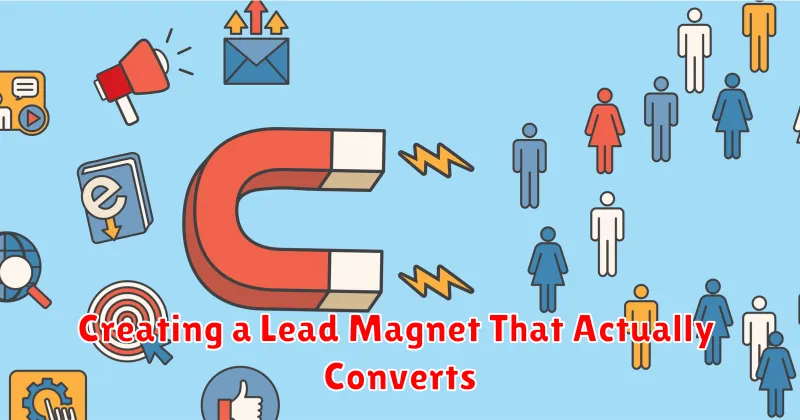Are you struggling to generate leads for your business? A high-converting lead magnet is crucial for attracting potential customers and building a thriving email list. This article will guide you through the process of creating a lead magnet that not only attracts attention but also effectively converts visitors into qualified leads. Learn how to identify your ideal customer’s needs, craft a compelling offer, and design a lead magnet that delivers real value, ultimately boosting your conversion rates and driving business growth. We’ll explore different types of high-performing lead magnets, provide actionable tips for optimizing your offer, and discuss strategies for promoting your lead magnet to maximize its reach.
Stop wasting time on lead magnets that don’t deliver. This comprehensive guide will equip you with the knowledge and tools you need to create a lead magnet that actually converts. Discover the secrets to crafting an irresistible offer, choosing the right format, and implementing effective delivery strategies. From ebooks and checklists to webinars and templates, we’ll cover the various lead magnet options available, helping you select the perfect format for your target audience. By the end of this article, you’ll be ready to create a lead magnet that generates a steady stream of high-quality leads, fueling your sales pipeline and driving sustainable business success. Focus on offering genuine value and watch your conversion rates soar.
What Is a Lead Magnet and Why It Works
A lead magnet is a valuable piece of content offered for free in exchange for a visitor’s contact information, typically an email address. This content can take many forms, such as ebooks, checklists, templates, webinars, or discount codes. The core purpose of a lead magnet is to attract potential customers (leads) and nurture them through the sales funnel.
Lead magnets work because they provide a mutually beneficial exchange. The visitor receives something they perceive as useful or helpful, addressing a specific need or pain point. In return, the business gains a valuable lead, allowing them to build a relationship, provide further information, and ultimately convert the lead into a paying customer. This exchange establishes trust and positions the business as a valuable resource.
The effectiveness of a lead magnet relies on offering high-quality content that is relevant to the target audience. It should be easily accessible and deliver on its promise. A well-crafted lead magnet attracts qualified leads, boosting conversion rates and driving business growth.
Identifying Customer Pain Points

Identifying customer pain points is crucial for any business seeking to improve its products, services, and overall customer experience. A pain point represents a specific problem or frustration a customer experiences while interacting with your company, product, or service. Effectively identifying these pain points allows you to address underlying issues and create targeted solutions that enhance customer satisfaction and ultimately drive business growth.
Several methods can be employed to uncover these pain points. Directly engaging with customers through surveys, interviews, and feedback forms provides valuable firsthand insights. Analyzing customer support interactions, such as calls, emails, and chat logs, can shed light on recurring issues. Monitoring social media channels and online reviews offers an understanding of public sentiment and potential areas for improvement. Finally, analyzing website analytics, such as bounce rates and exit pages, can reveal where customers are encountering difficulties in their online journey.
Once pain points are identified, it’s essential to prioritize them based on their frequency and impact on the customer experience. Addressing the most critical pain points first allows you to quickly improve customer satisfaction and build loyalty. By understanding and addressing customer pain points, businesses can transform challenges into opportunities for growth and create a stronger, more customer-centric organization.
Types of Lead Magnets to Offer
Lead magnets are essential for attracting potential customers and building your email list. They offer valuable content in exchange for contact information, initiating a relationship with your audience. Effective lead magnets address a specific pain point or provide a desirable solution for your target market. Choosing the right type is crucial for maximizing conversions.
Several effective lead magnet formats exist. Checklists and cheat sheets offer quick, actionable steps for completing a task. Ebooks and guides provide more in-depth information on a specific topic. Templates and worksheets offer a framework for users to implement strategies or organize information. Webinars and online courses provide educational value and establish you as an expert. Consider your audience’s preferences and the value your offer provides.
Successfully using lead magnets requires strategic planning and promotion. Place them strategically on your website, such as on landing pages and pop-up forms. Promote your lead magnets through social media and email marketing campaigns. Ensure your lead magnet provides high-quality content that aligns with your brand and delivers on its promise.
Designing with Value in Mind
Value-driven design prioritizes delivering maximum impact for users and stakeholders while optimizing resources. It focuses on understanding the core problem, identifying the most effective and efficient solutions, and eliminating unnecessary complexity. This approach emphasizes functionality, usability, and achieving the desired outcome with the least amount of waste, be it time, money, or effort. The process often involves rigorous testing and iterative prototyping to ensure alignment between the design and its intended value.
A key element of value-driven design is user research. By deeply understanding user needs, motivations, and pain points, designers can tailor solutions that truly address the problem at hand. This involves gathering data through various methods, such as user interviews, surveys, and usability testing, and then analyzing that data to inform design decisions. The ultimate goal is to create a product or service that provides genuine value to the user and meets their expectations effectively.
Implementing value-driven design requires a shift in mindset. It requires moving beyond simply creating aesthetically pleasing designs and focusing on delivering measurable results. This means establishing clear metrics for success and tracking progress throughout the design process. By constantly evaluating the value being created, designers can ensure that the final product not only looks good but also performs well and achieves its intended purpose.
Tools to Build Lead Magnets

Creating compelling lead magnets requires the right tools. Fortunately, several options cater to various needs and budgets. For design-focused lead magnets like ebooks and checklists, Canva and Visme are excellent choices. They provide user-friendly interfaces and pre-designed templates to create visually appealing content quickly. For interactive lead magnets like quizzes and calculators, tools like Typeform and Interact offer engaging templates and data collection features. Selecting the right tool depends on the type of lead magnet you are creating and your comfort level with design software.
Beyond design tools, other software can streamline the lead magnet creation process. Google Docs and Microsoft Word are useful for writing and formatting text-based lead magnets like reports and white papers. For audio or video lead magnets, consider recording and editing software like Audacity or Descript. These tools offer basic editing capabilities to polish your content. Finally, consider using landing page builders like Leadpages or Unbounce to host and deliver your lead magnets effectively. These platforms streamline the process of collecting email addresses in exchange for your valuable content.
By strategically selecting the right combination of tools, you can efficiently create high-quality lead magnets that attract your target audience and grow your email list. Remember to choose tools that align with your budget, technical skills, and the specific requirements of your lead magnet. A well-designed and easily accessible lead magnet is crucial for successful lead generation.
Integrating with Email Platforms
Integrating your application with email platforms allows for automated email sending and receiving, enhancing communication and workflow efficiency. This integration can range from simple transactional emails, such as password resets and order confirmations, to more complex marketing campaigns. Key benefits include improved communication speed, reduced manual effort, and enhanced user experience.
There are several approaches to email platform integration. You can use SMTP (Simple Mail Transfer Protocol) for direct sending, or leverage email APIs offered by providers like Gmail and SendGrid for more advanced features. Choosing the right method depends on your specific needs and technical capabilities. Consider factors like email volume, security requirements, and the level of customization needed.
Best practices for successful integration include thorough testing, robust error handling, and ensuring compliance with email regulations like GDPR and CAN-SPAM. By adhering to these standards, you can maintain a positive sender reputation and maximize the effectiveness of your email communications.
Optimizing Opt-In Forms

Opt-in forms are crucial for building your email list and nurturing leads. Optimizing them for conversions involves focusing on a few key elements. Keep the form short and simple, only asking for essential information like name and email address. Clearly communicate the value proposition – what subscribers will gain by signing up. This could be exclusive content, discounts, or updates.
Design plays a vital role in attracting attention and encouraging sign-ups. Use a clean and visually appealing layout. Ensure the form is mobile-responsive, functioning seamlessly across various devices. The call-to-action (CTA) button should be prominent and use compelling language that motivates users to click, such as “Subscribe Now” or “Get Free Updates.”
Finally, consider the placement of your opt-in form. Strategic placement, such as above the fold, in a pop-up, or at the end of a blog post, can significantly impact its visibility and conversion rate. A/B testing different form variations, including copy, design, and placement, allows you to identify what resonates best with your target audience and maximizes conversions.
Follow-Up Sequences After Signup
A well-crafted follow-up sequence is crucial for nurturing new signups and converting them into engaged users or paying customers. Immediately after signup, a welcome email should be sent to confirm their registration and set expectations for future communication. This initial contact builds rapport and reinforces their decision to join your list.
Subsequent emails in the sequence should provide value to the subscriber. This could include educational content related to your product or service, exclusive offers, or personalized recommendations. The timing and frequency of these emails should be strategically planned to avoid overwhelming subscribers. Consider segmenting your audience based on their interests or signup source to deliver more targeted and relevant content.
Finally, track your metrics. Monitor open rates, click-through rates, and conversions to gauge the effectiveness of your follow-up sequence. Use this data to optimize your emails and improve your overall conversion rates. A/B testing subject lines, email content, and call-to-actions can help you identify what resonates best with your audience.
Testing Different Offers
A/B testing is a crucial aspect of optimizing marketing campaigns. By testing different offers, you can determine which resonates best with your target audience. This involves presenting different versions of an offer, such as variations in pricing, promotional messaging, or bundled products, to separate groups. Analyzing the results helps identify the most effective offer, leading to improved conversion rates and a stronger return on investment.
Key metrics to track when testing offers include conversion rates, click-through rates, and average order value. By analyzing these metrics, you can gain valuable insights into customer behavior and preferences. For example, you might find that a discounted price leads to higher conversion rates but a lower average order value, while a bundled offer might increase both metrics. Careful consideration of these results is essential for making informed decisions about which offer to implement long-term.
Testing different offers isn’t a one-time process. Continuously iterating and experimenting with new offers is vital for staying ahead of the competition and adapting to changing market dynamics. Regularly testing allows you to refine your approach and ensure that your offers remain relevant and appealing to your target audience.
Tracking and Improving Conversions
Tracking conversions is crucial for understanding the effectiveness of your marketing efforts. It involves measuring how many visitors complete a desired action, whether that’s making a purchase, signing up for a newsletter, or filling out a contact form. By monitoring these actions, you can identify what’s working, what’s not, and where to focus your resources for maximum impact.
Several key metrics can help you track conversions, including conversion rate (the percentage of visitors who convert), cost per conversion (how much it costs to acquire a single conversion), and return on ad spend (ROAS), which measures the revenue generated for every dollar spent on advertising. Analyzing these metrics helps you optimize campaigns and allocate budget effectively.
Improving conversions requires continuous optimization. This can involve A/B testing different elements of your website or marketing materials (like headlines, calls to action, and images), personalizing the user experience, streamlining the checkout process, and building trust through testimonials and social proof.

